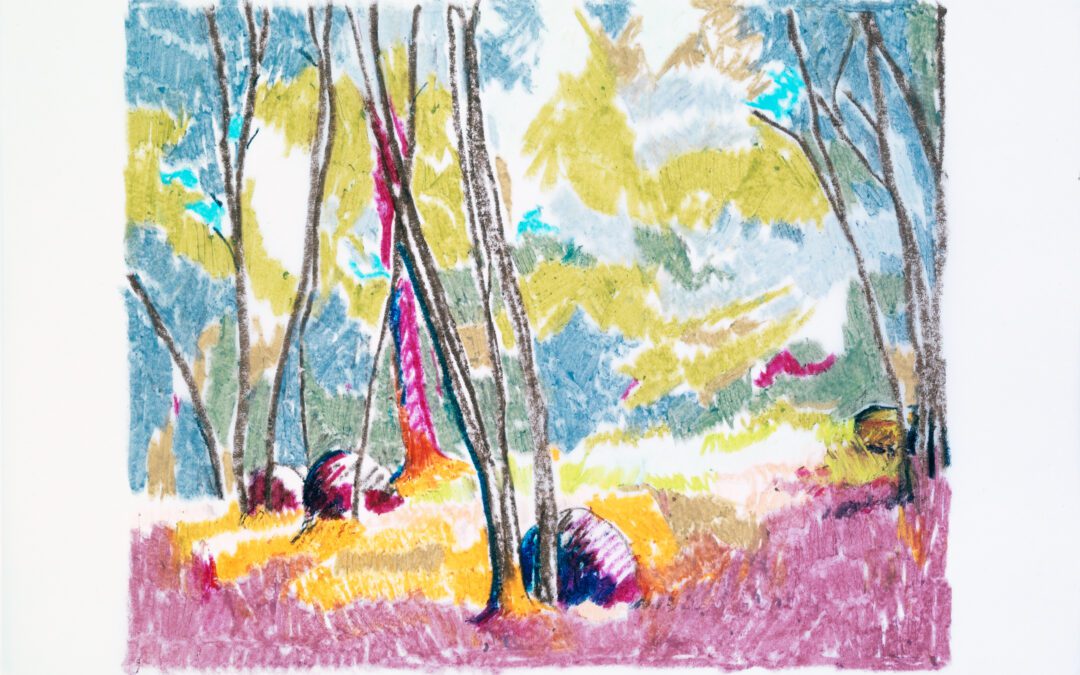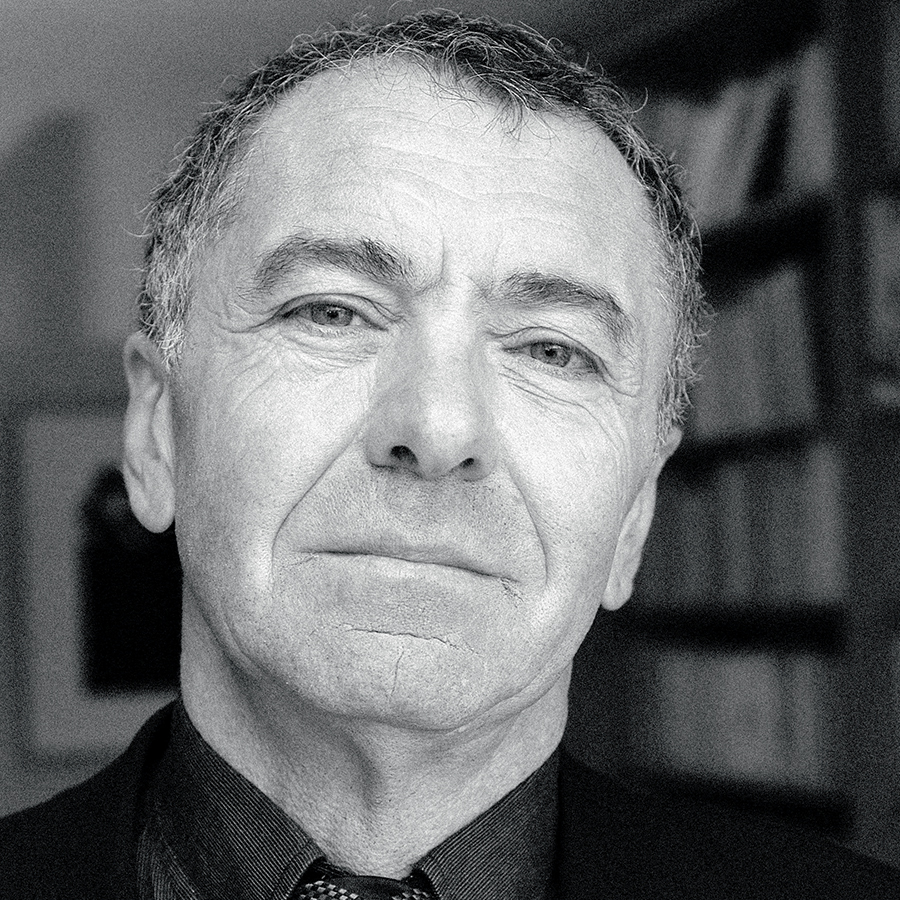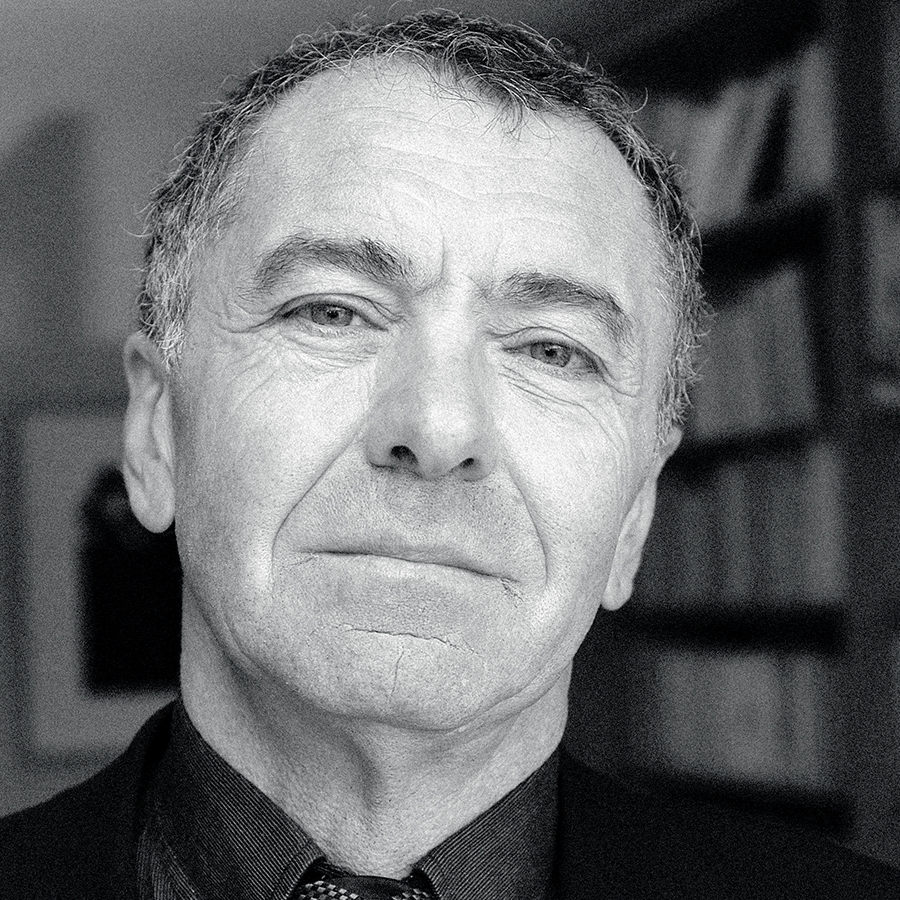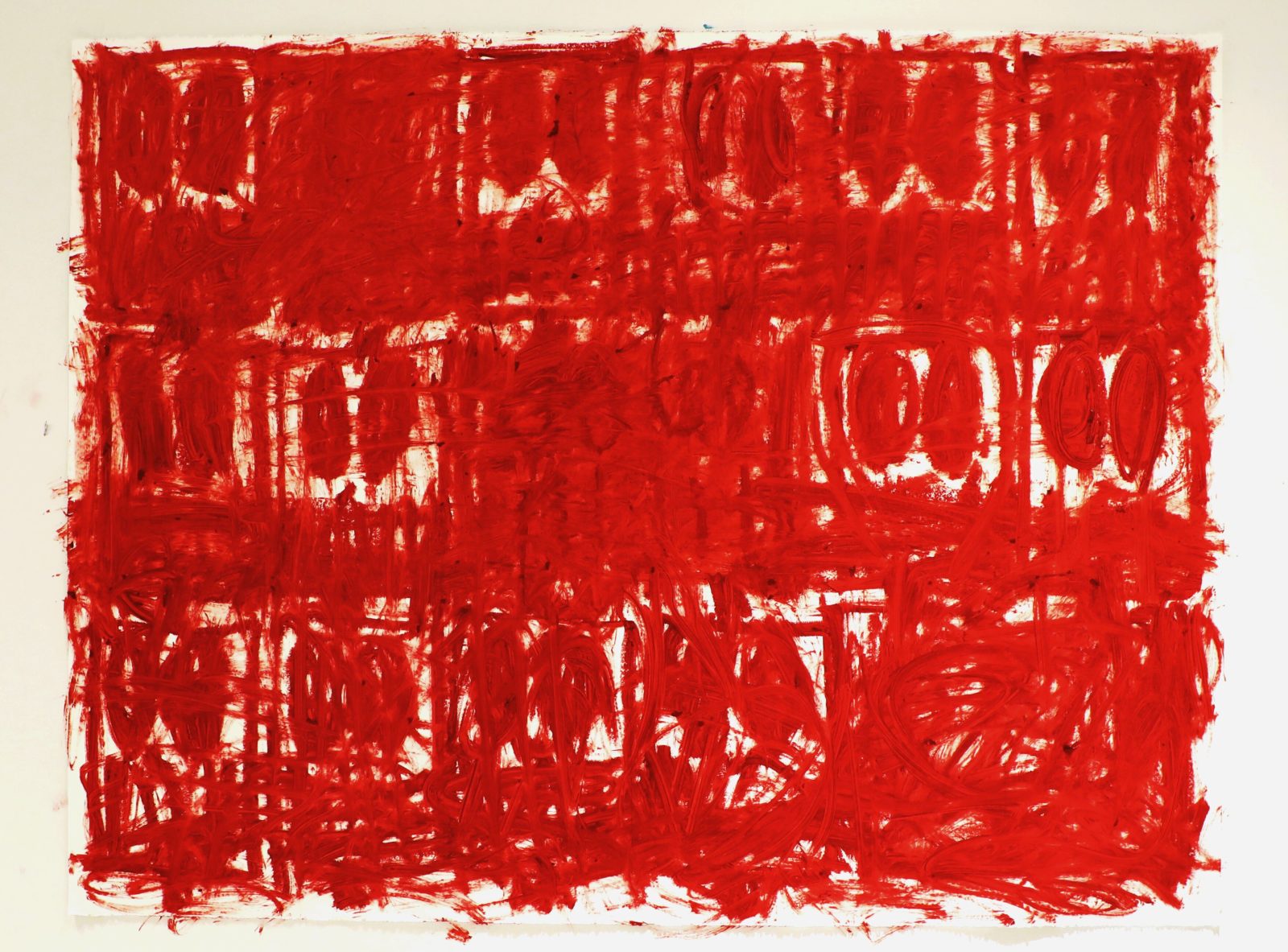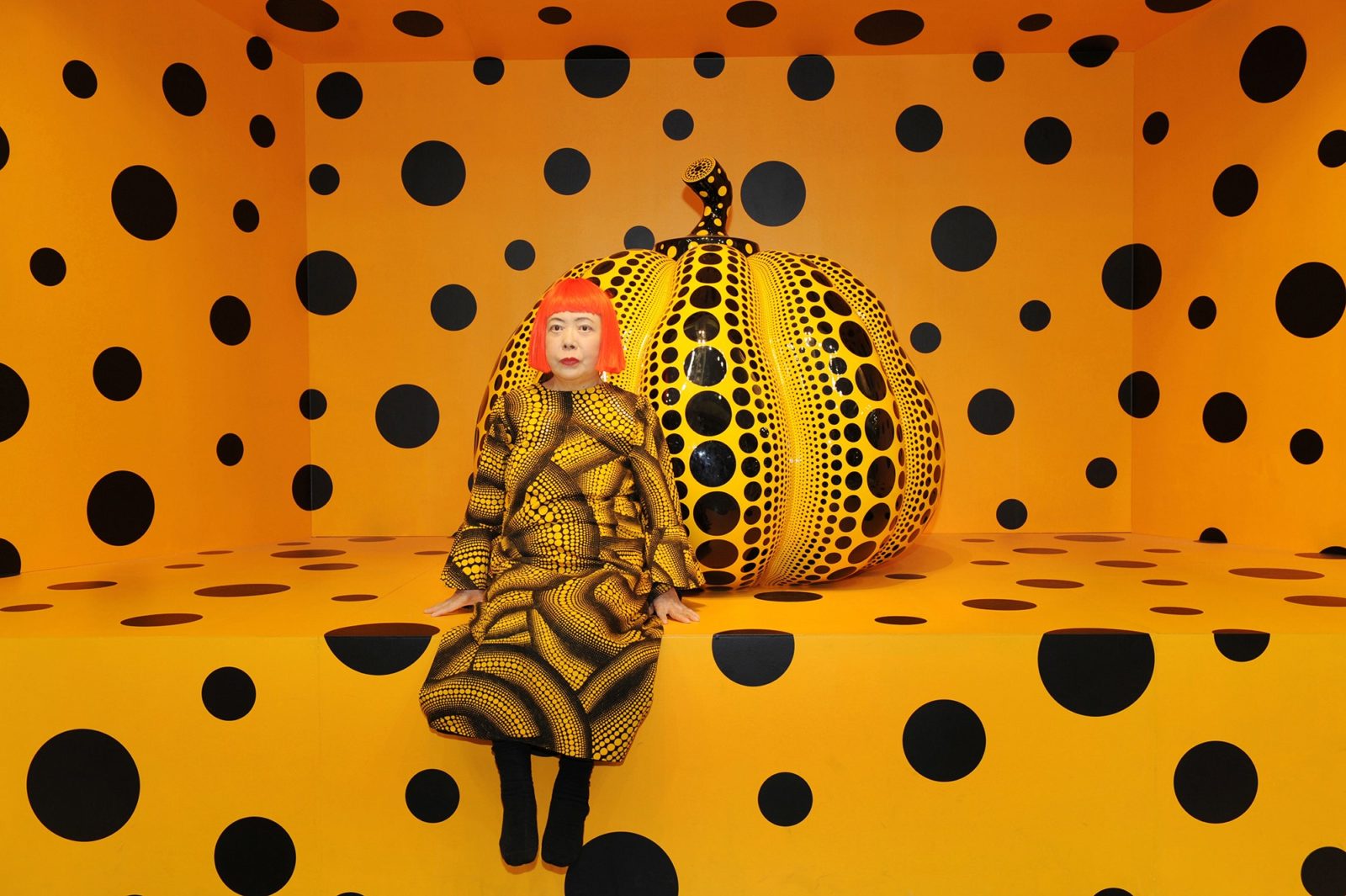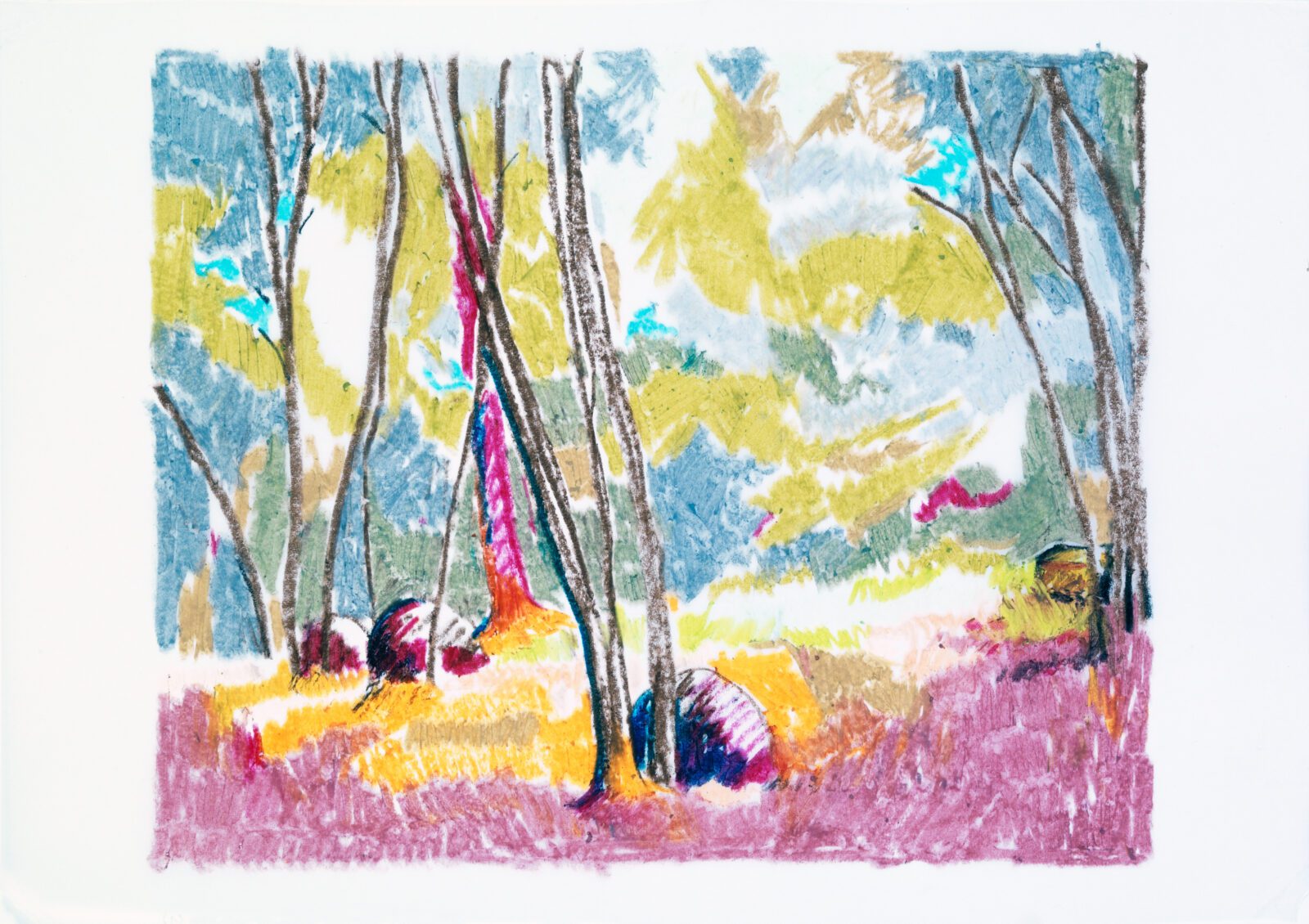
GILLES CLÉMENT X L’ESPACE DE L’ART CONCRET
By Stéphanie Bui
Gardener, landscape designer and botanist, Gilles Clément, was invited to imagine the rehabilitation of the park of the Mouans-Sartoux castle in 2004, which accompanied the opening of the Albers-Honegger Donation building, the work of Swiss architects Gigon & Guyer.
In summer of 2022, a new facet of the city was imagined with the creation of the multi-storey parking lot and its green square. The municipality invited Clément to extend the project by linking the old and the new, with the ‘Espace de l’Art Concret presenting a thematic tour of his in the galleries of the castle. Known throughout the world for his gardens and his ecological and political commitments to cooperation with nature, he is the inventor of the concepts of « Garden in Motion », « Planetary Garden » and « Third Landscape », advocating the necessary cooperation with nature that leads the gardener to « observe more and garden less ».
With the climate crisis ever looming: unprecedented storms forecast across much of Europe, global water shortages and devastating forest fires raging worldwide, now (more than ever) is the time to look to radical solutions. To discover ways of turning back the clock on our increasingly resource draining systemics and look to how we can better work alongside and for our planent. In recognition of his commitment to nature, we take a look back at our interview with Gilles Clément, by Stéphanie Bui, featured in Crash 94, Vegetal Guerrilla.
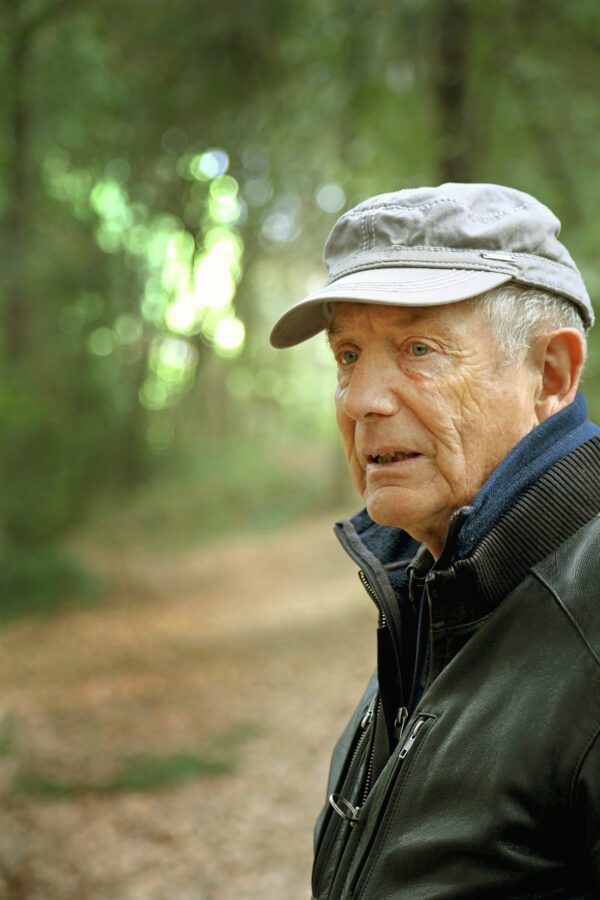
Portrait: Gilles Clément by Bruno Gros
SB: Since our relationship with animals is evolving in our societies, notably with the rise in vegan activism supported by anti-speciesism ideology… As someone who is immersed in the world of living things, what do you think about the evolution of our relationship with animals? How might it change our relationship to the living world?
GC: We are animals. Unlike plants – all of which can produce their food from solar energy and a few minerals – our survival depends on a certain type of biodiversity. We use animals as a potential food source, but their role in the global balance is more important than their nutritional value. They are part of the balance of the eco- system, especially insects. Animal exploitation is a problem. It takes fourteen times as much farmland to produce the same amount of protein from cattle as from plants.
SB: Because you spoke of garde-ners as “magicians” during your inaugural lesson for the Creation Chair at the Collège de France during the year 2011- 2012… How does joy manifest itself for you as a gardener, with all the marvels of the world at your fingertips?
GC: Joy in the garden does not come from triumphant performative politics. It comes from the simple happiness of existing in balance with a living whole and being surprised by its inventive power.
SB: Because gardening is resisting, in your view. Resisting by facilitating a culture of autonomy for the living world, and not by seeking mastery in spite of the intelligibility of the context. A posture of “working with rather than against nature”, as you explain. Can you tell us the story of your nettle garden, your first iconic resistance garden, and how it has inspired you for subsequent projects?
GC: The Melle Nettle Garden was commissioned for the town’s Biennial of Contemporary Art under the direction of Dominique Truco in 2007. I wouldn’t have created that garden if it hadn’t been for the so-called “agricultural orientation” law passed one year earlier. For health reasons, that law forbids the use of PNPP, or Natural Products of Low Concern, which includes nettle manure. In actuality, the law prohibits free gardening products. Any gardener can make their own “nettle manure” and spread it on their garden to boost the immunity of treated plants and thus avoid the expense of chemical treatments and fertilizers. Used since the dawn of time, these substances produced from plant fermentation (nettles, horsetail, comfrey, etc.) have never caused any diseases. In Melle there was a field of nettles below the town, which helped make it easier to put together this garden: tracing paths through the nettles, adding a terrace with a giant filter to show how it works and talking about the product to visitors, who receive a bottle of purin on every market day.
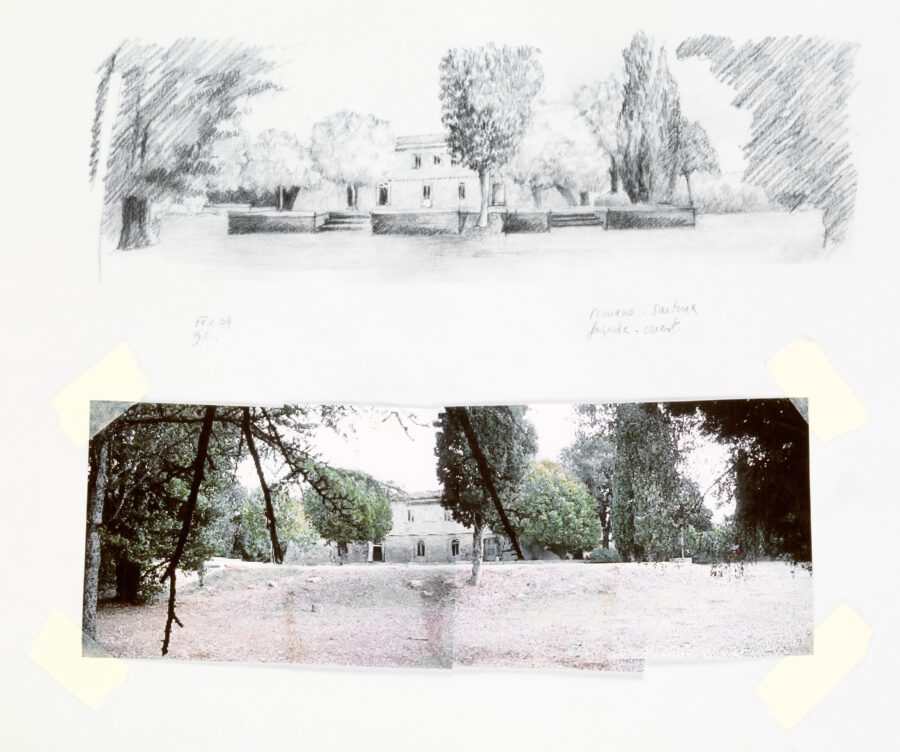
SB: Because at the heart of the garden is the biological and cultural mixing within a context of globalization… How does the notion of diversity play a key role in understanding a garden?
GC: The only proverb I use comes from the farming world: “You don’t put all your eggs in one basket.” If the basket falls, you have lost everything. Approving the use of banned neonicotinoids to save the poor sugar billionaires from an aphid attack on their beets is an illustration of this. Stupid and dangerous monoculture. What we grow and raise depends on the diversity of the environment, which includes the gardener’s “helpers”, i.e. species that have a positive effect on crops and livestock. We all depend on diversity. Without the billions of bacteria that inhabit us, we would not even exist.
SB: Because gardens evolve, you underline the importance of“understanding the mechanisms of interactions between plants, animals, humans, climate and soil, achieving a balance where there is very rarely one species that takes over.” Could you share some examples of these interactions that might shed some light on this natural balance?
GC: The natural balance is constantly being reconstituted: a direct expression of the mechanisms of evolution. Interactions between plants and animals have always existed. African acacias produce toxins in their foliage to ward off impalas and at the same time they send out an ethylene gas to warn the surrounding trees. Chickadees have learned to know and feed on the boxwood moth, which recently arrived from China. This insect is no longer invasive. The caterpillar of the Tyria jacobaeae (Cinnabar moth) is yellow with thick black stripes, which tells the birds that it is poisonous, etc… There are many examples but they are not well known and are rarely used in our crops or livestock.
SB: Because you use the expression “natural genius” to describe the intelligence of the living world… Why do you choose not to use the word “nature”?
GC: The word nature is interesting when talking about a character and saying, “this person has a robust or fragile nature”, etc. When the word nature is used to designate the whole of the non-human living world, it plays a perverse role by distancing humanity from this whole to the point of separating humanity from nature. This dates back to the time when the word was created by the ancient Greeks, in order to offer an objective and scientific interpretation of the non-human living world by separating it from the polytheistic superstitions of that era. Those are the beginnings of the natural sciences. We moved from a context of immersion with the non-human living world to a certain distance. This distance has grown with the increasingly efficient technologies used to study this so-called nature, which has led us to believe that humanity is not part of nature. Ecology and common sense show us that we cannot separate humanity from the rest of the living world. It is therefore necessary to eliminate the word nature… Or to use it in other ways.
SB: Because your way of gardening, of working with the living world and not against it, expresses a dedication to maintaining a pre-existing harmony, a respect for “natural scales”, “a form of cosmic wisdom” or “a just measure”. This disappearance of the proportionate good, of an order of magnitude that makes sense, is analyzed as an inherent characteristic of the postmodern world by the philosopher and mathematician Olivier Rey in his book Une question de taille (A Question of Scale). Yet this question of scale, of the proportional relationship between quantity and quality, remains absent from contemporary debate. In the context of your private and public commissions, how do you experience the mathematical spirit at the heart of scientific develop- ment in our postmodern world, which tends to prefer things to be even bigger, entirely measurable and completely geometric?
GC: Our preference for things that are always bigger, entirely measurable and completely geometric is a way of turning our back on biological reality, which is never measurable and always inventive. It is a classic neurosis, one that is often shared across the world of architects (but not always) and reinforced by an illusion of mastery. The mathematical mind has its use- fulness as long as one is using mathematical power as a tool and not as an end in itself.
SB: Because the dragonfly is your symbol for gardening… How does the dragonfly inspire you?
GC: I used the dragonfly as a symbol of the “planetary garden” to talk to children about this concept. Dragonfly larvae live in water. The final insect, the winged dragonfly, comes from the last molting, when it leaves its external skeleton (the exuvium) and becomes a flying insect. If we make a drawing of the animal’s path in life, then we would trace a vertical line starting from the bottom of the water and moving towards the clouds. Dragonflies explore water on the ground and water in the air. This insect perfectly expresses the absolute need for water among every living being. There is no life without water. The planetary garden is the planet considered as a garden. All living things swim in this great washing machine called the biosphere: a small “aquatic” layer on the skin of the Earth.
SB: Because, in your opinion, there is a general need to convey more information and expand our knowledge to understand the living world… What is the most important knowledge to convey?
GC: The first priority is to learn about the relationships between plants, animals and microorganisms. But this cannot be done without knowing how to put a name on the species observed. Then learn how to use the diversity we need without destroying it and without intervening in a harmful way on the living beings we do not use, because they necessarily play a positive role, even if it is unknown, on the living beings we use.
SB: Because your practice as a gardener has led you to take a critical view of the notion of progress as it appears today, within a postmodern world characterized by “modernity as a process” in which “efficiency” reigns, to use Olivier Rey’s words… What is your relationship to progress and modernity?
GC: I see progress as a path to understanding the world we live in, as immaterial growth and not as an accumulation of goods. Neoliberalism sanctifies technological progress in the sole service of the laws of the market. It favors all actions that tend towards this direction, including those that contribute to the destruction of the conditions for life on this planet.
SB: Because water is an essential element for life, which you often mention in order to remind your audience of the importance of the living world… What do you think is most important to remember in terms of our relationship with water?
GC: That there is no life without water. From a biological point of view, water is not just a liquid we can swim in, it is first and foremost a living environment that allows dissolved elements to be absorbed. For this absorption to remain beneficial, the water must be of acceptable quality, meaning not polluted. The first measure we can take is to stop polluting. We can plan to clean up a polluted environment, but that is a costly and inefficient task.
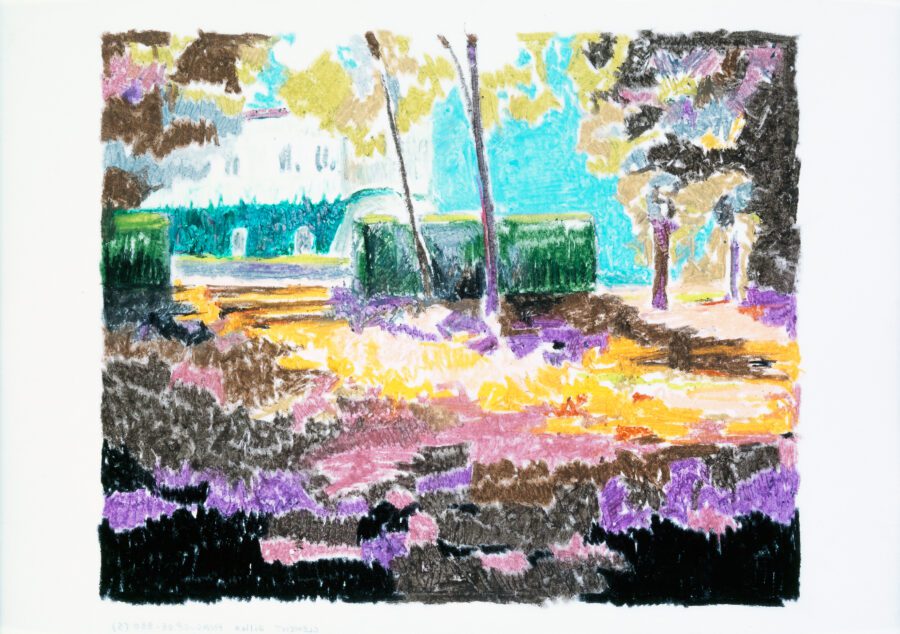
SB: Because gardeners have a critical relationship with time… What do you think of the notion of time as expressed in the fashionable term “sustainable development” and now the “regenerative economy”?
GC: Gardeners do not fight against time, they work along with it. They live according to the seasons, meaning the passage of time and the changing weather. They know that nothing is sustainable, everything changes, so they move forward along with the workings of evolution. Development is a term that goes along with the neurotic principle of growth. It has nothing to do with the reality of the soil. Planet Earth is a finite space. The expression sustainable development is part of a global greenwashing campaign. I confess that I have not yet understood what “regenerative economy” really means. It is probably still about reviving the dynamics of consumption, but I do not have enough information to form an opinion.
SB: Because these culturally unloved creatures are nevertheless essential links in the chain of life. You recommend that we observe their activity and avoid using insecticides. In fact, pesticides almost killed you… Why are insects so important? Can you share some examples?
GC: Pesticides are tools of destruction like firearms, atomic bombs, etc… In the end, they kill us after eliminating their main target: insects. Insects are intimately and deeply linked to all the beings of the surrounding ecosystem. They serve as food in chains of predation. They can help gardeners by impacting certain elements whose presence we are trying to control. They play a major role in maintaining biodiversity, whether that means birds, bats or any of the other animals that use them as a food source. Eliminating them means eliminating all the living things connected to them. You might as well say everything.
SB: Because travel is critical… How has travel shaped your practice and vision of gardening?
GC: Travel is about understanding where you live when you come home. Travel allows us to approach the diversity of landscapes, cultures and living beings that we meet: plants, animals, humans. These journeys reveal the fragility or the power of living beings and their capacity to develop a biological opportunism allowing them to settle wherever the climate permits. Travel confirms the fact that borders do not exist. Only the limits of biomes exist, or habitats for life within a determined climate. Planetary mixing and diversity, represented by the composition of FLowers in a garden, is only a small part of what happens across our entire planet.
SB: Because when you were an aspiring horticultural engineer, you benefited from key teachings, such as systemics, which is no longer taught, but you also learned to “kill” everything you don’t keep, or everything you don’t cultivate… How can you teach, unlearn, and act against the dispossession of our relationship with the living world that is inherent to the postmodern era?
GC: Teaching in the horticultural engineering school of the time offered a high level of knowledge concerning botany and entomology. This knowledge base was progressively undermined by the processes of so-called efficient management where, ultimately, all that we learned disappeared under the blow of machines and chemistry. We have thus come to the point where we no longer teach about the living world and its complexity, since we consider it to be a waste of time. Today we are realizing our mistake. We are trying to revive our approach to the living world with competent teachers. Unfortunately, these teachers are still very rare and are not paid at their fair value. There is still much more work to be done. Students are the first to make this demand.
SB: Because your gardens put emphasis on the living world and not aesthetics… How can we learn to look at life? What do we have to unlearn about our gaze and its preference for geometric aesthetics, etc.?
GC: The focus on the living world does not exclude what I call an “aesthetic resolution”. It only puts it in second place. To make the rich diversity of an untreated meadow more accep- table, we might mow a border around the edge to enhance the central thicket. This is a simple process that removes only a very small part of the herbaceous diversity that can thrive in these places. This framework may align with the plot’s rigorous geometry and ease the fears of those who only care about controlling space through a radical method of management.
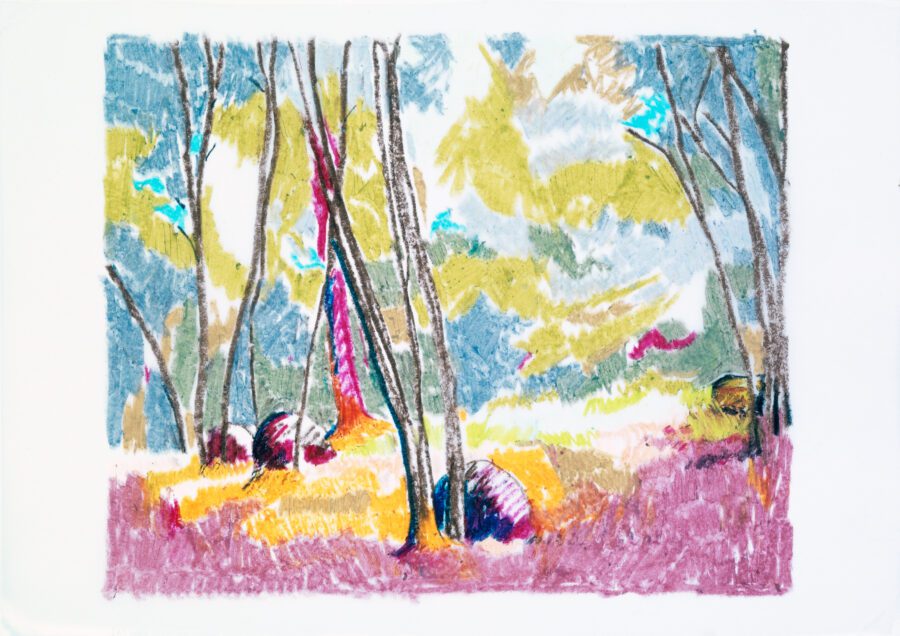
Discover the exhibition in the Galerie du Château at l’Espace de l’Art Concret, until October 16th, 2022
Curator: Fabienne Grasser-Fulchéri, assisted by Alexandra Deslys and Claire Spada In collaboration with the Domaine du Rayol, Canadel sur Mer (83)
Artists: Gilles Clément, Olivier Calvel, Gottfried Honegger, Enrique Ramirez
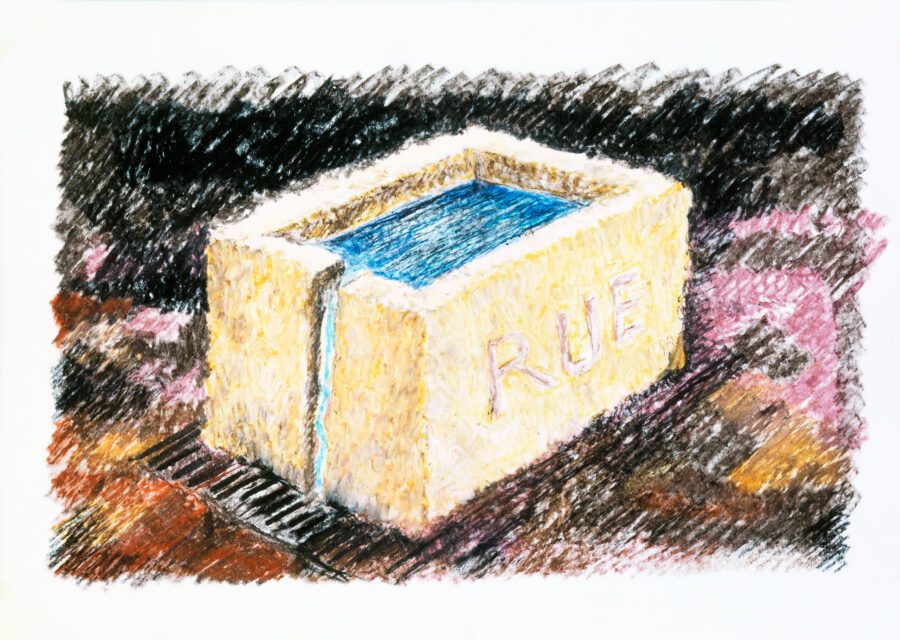
IMAGE CREDITS
Gilles Clément
Study for the castle of Mouans-Sartoux, 2004
Realized within the framework of a landscaping project
François Navarro, landscape designer
Preparatory work
FNAC 05-930 (1) Centre national des arts plastiques
Photo credit Yves Chenot © rights reserved / Cnap







